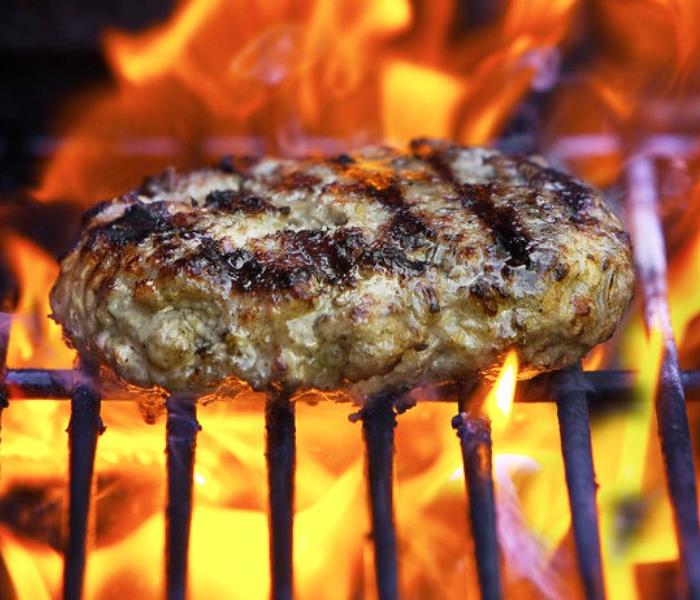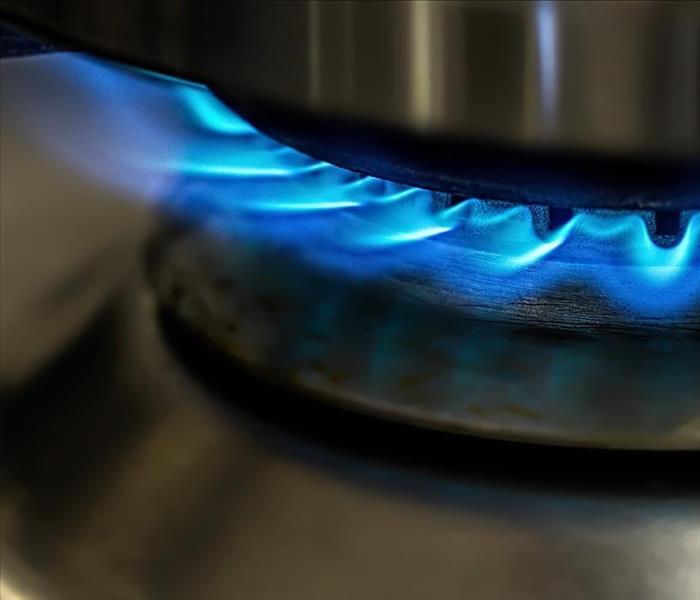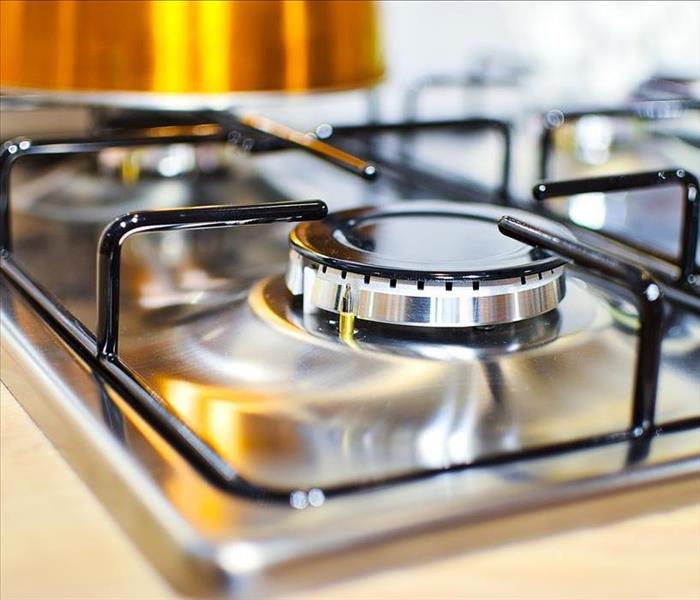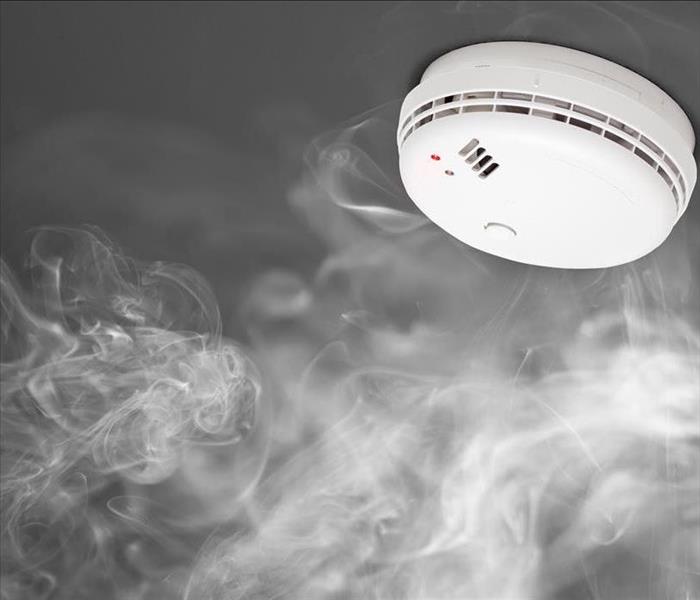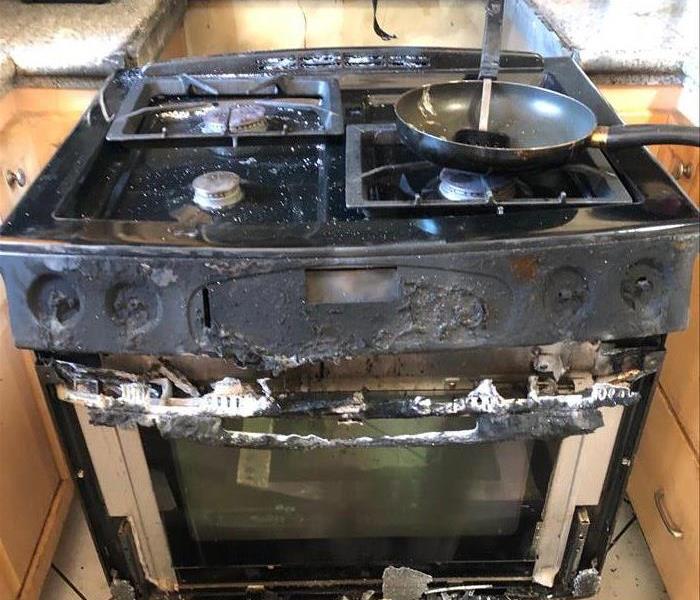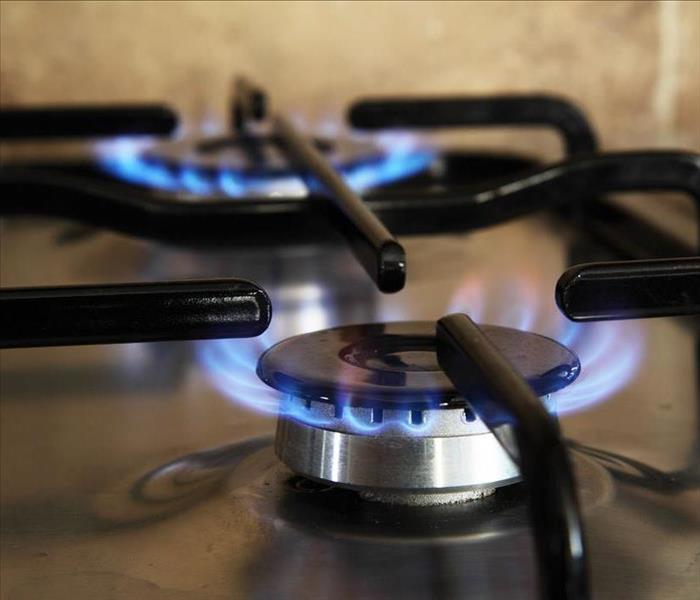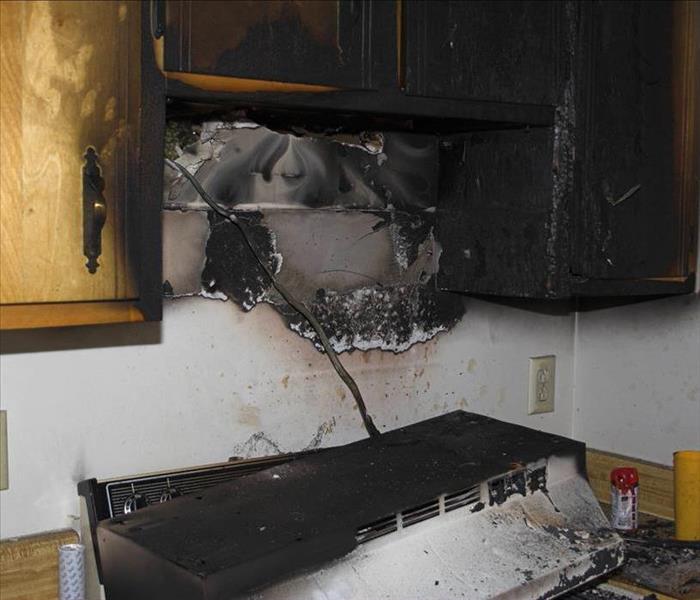Recent Fire Damage Posts
Deodorization after a fire damage
3/16/2023 (Permalink)
Odor removal is an essential component of almost every restoration job. There are a variety of options available from masking agents to foggers to ozone and hydroxyl generators, and so on. In our industry, we have noticed a rather large debate being waged over the benefits and dangers of these two options. There is a clear advantage to using machines to eliminate odors from spaces and items rather than simply just trying to mask them. SERVPRO of Northwest Ontario technicians are highly trained to recommend the best method for your odor neutralization.
It is VERY IMPORTANT to know that both ozone and hydroxyl will remove odors – hydroxyl will just take longer.
Differences Between Hydroxyl and Ozone
- Hydroxyl is not harmful to plants and fish.
- Hydroxyl does not leave behind a chemical smell.
- Hydroxyl works on a larger variety of odors.
- Hydroxyl can be used in wet areas to help deodorize. Ozone machine used in wet areas can bleach a material.
- Hydroxyl machines will typically take longer to deodorize.
- Ozone can possibly damage rubber or leather goods.
- Ozone is to be used in unoccupied areas with return to the area at least one hour after the machine has turned off.
- Ozone is much stronger and faster and must be closely monitored.
Both options are very effective and have their time and place on when to be used. Depending on the type of odor and the amount of time allotted will dictate what option you should choose. Be sure to only use experienced technicians when using equipment such as these. Supervision of both methods is necessary to effectively remove the odor.
Call us if you have deodorization needs, our SERVPRO of Northwest Ontario Technicians are ready to help.
Fire Safety at Home
8/10/2022 (Permalink)
The best way to keep your family and home safe from a fire is to take action before it happens!
For your loved ones, take the time to:
- Practice fire drills with your family
- Have an escape plan from each room
- Have a designated meeting place outside of your home to make sure everyone has safely made it out of the house.
For your home, take some precautionary steps now to fireproof your home:
- Check Your Smoke Alarms Often: Your smoke alarms will alert you of a fire before you see or smell smoke. Check them at least every six months.
- Keep A Fire Extinguisher in Your Home: A fire extinguisher can be used to put out some small fires and stop them from spreading. Every home should have one. If your home has more than one story, it's a good idea to have a fire extinguisher on each level.
- Never Leave Candles Unattended: Candles can easily catch furniture, papers and even hanging pictures and décor on fire. Be sure to extinguish candles when you leave the room and especially if you leave your home.
- Remove Clutter: Clutter that is too close to a heat source can catch fire. Once clutter catches on fire, it can make the fire worse and even stop you from getting out of your home during a fire. Get rid of clutter that could catch fire or block an escape route.
- Check Your Electric Cords, Sockets and Exposed Wires: Check your electric cords and exposed wires often to make sure they are intact and not damaged. Make sure the wall sockets are not too full and that all the plugs are secure.
Acting on these safety precautions will give you and your family peace of mind.
Fire Escape Plan
8/3/2022 (Permalink)
Every second counts during a fire. Fire experts agree, people have as little as two minutes to escape a burning home before it’s too late to get out.
In a matter of moments, a small flame can become a major fire, making it critical to be prepared with an escape plan in place. A survey conducted by the American Red Cross shows only 26 percent of families have developed and practiced a home fire escape plan. Once a plan is developed, it is critical that everyone in the home understands the plan; the best way to do this is by practicing the escape plan at least twice a year. Increase your chance of surviving a fire by ensuring you have working smoke detectors in place, building an escape plan, and then practicing the escape plan. The following are a few steps to help you develop an emergency escape plan:
Draw a map of each level of your home and show all doors and windows. Find two ways to get out of each room. Make sure all doors and windows that lead outside open easily.
Fire Safety and Fireworks
8/3/2022 (Permalink)
With the warmer months of the summer comes times to celebrate events with barbeques, family events and everyone’s favorite firework displays. These times where we use fireworks for celebrations do we take the necessary safety precautions to prevent injury or property damage needed? In all years studied, Independence Day has more incidents reported in NFIRS than any other day of the year. The number of incidents in the NFIRS database associated with July 4 and July 5 were 2.4 times the average daily number of incidents on other days of the year. Brush and outside fire incidents were nearly four times higher during this holiday than on the average day. Structure fires increase on July 4 and July 5th as well. As would be expected, fireworks were responsible for a considerable portion of the increase in fire incidence on Independence Day. In fact, 31 percent of the total annual number of fireworks−related fires occurs on July 4 and 5. These fires individually were less severe than fires generally, with lower average dollar loss per fire, less than half of the injuries and one third the deaths per fire.
Some of the Reasons for Your Insurance Company to Deny Your Fire Claim
7/25/2022 (Permalink)
--Deliberately setting fire to a home is a criminal act, and a desire to collect insurance money is often the motive. For this reason, insurance companies require a fire investigation as part of the claim process. This helps the insurer establish the cause of the fire and note potentially suspicious details, such as multiple points of origin.
To help further reduce the risk of insurance fraud, your insurance company may also evaluate your personal finance and insurance claim history. Examples of potentially suspicious findings that may result in a denial of a home fire claim include the following:
- A recent increase in coverage or decrease in deductible
- Extensive debt or pending bankruptcy
- Prior insurance claims and loss history
- Recently purchased, high-value items on claim list
- The value of destroyed contents is inconsistent with household income
Because of this detailed investigation, any homeowner filing a claim in Ontario, Ca should be prepared for a potentially lengthy claim process.
--Like arson, a vacant home fire is also not typically covered under most insurance policies. A home is considered vacant if it is uninhabited for 30 or more consecutive days. If your insurance company can verify this circumstance, it may deny your claim, forcing you to fund cleanup and restoration costs out-of-pocket. To protect your financial interests, you should consider purchasing vacant home insurance or add an endorsement to your existing policy for any vacation homes or rental property you own.
Signs of Gas Leaks
5/16/2022 (Permalink)
They're sometimes hard to recognize, but it doesn't take much of a leak to cause a gas fire. These home disasters are all too common. Fortunately, you can avoid a fire or worse by recognizing signs of a leak:
- A hissing or whistling sound near the line
- The smell of rotten eggs or sulfur
- Bubbles in the water
- Dead houseplants
- Visible dust near the gas line
- Damage to the gas pipe
Family members or pets may show signs of a natural gas leak, as well. These may include nosebleeds, reduced appetites, nausea, mood changes, irritation to the eyes and throats, disorientation, and breathing difficulties.
Dos and Don’ts
Avoid a gas fire or explosion in your Ontario, CA home by following these top tips:
1. Check Gas Stoves
If you have a gas stove, the dials may have been turned on or left on accidentally. If you're confident it's safe to remain in your home, move to the stove and turn off any flames.
2. Do Not Flip Switches
By simply flipping the light switch to on or off could make a spark that causes a gas explosion. Instead, use a flashlight for any other actions you take in the house. Don't use the phone inside the house, either. In fact, don't use lighters, candles, or anything else that could ignite.
3. Ventilate the Home
Open all the windows and doors, so fresh air can come in and gas will move out of the house. Don't worry about taking any steps further than this. Instead, wait to contact emergency or fire remediation professionals when you and your family are safely outside.
4. Go Outside and take everyone with you
Avoid Smoking Indoors
5/12/2022 (Permalink)
If you or one of the residents in your home currently smokes, it's important to be informed on how to prevent a cigarette fire. After first checking with your local fire department in Ontario, for any pointers they might have, consider this tip, as well.
Never Smoke Indoors
There are a surprising number of flammable materials in your home or garage. Any type of fabric will burn easily, so, if an ashtray gets knocked over, or a stray cinder falls on anything it could easily start a fire and severely damage your home. In addition to the risk of fires, smoke from cigarettes can also damage the fabrics in your home and cause them to smell bad. This smell is difficult to remove with conventional laundry detergent.
Consider professional odor removal if anyone has smoked indoors and the smells bothers you and your family members.
Call SERVPRO of Northwest Ontario (909) 984-3544
Ozone for Odor Removal After Fires
8/9/2021 (Permalink)
What is Ozone? Ozone is a molecule composed of three atoms of oxygen. The oxygen that we breathe contains two atoms of energy. The third atom of oxygen can detach and reattach to molecules of other substances, which changes their chemical composition. This machine oxidizes and removes odor. These machines are not limited to odors from smoke. They can be helpful in many odorous situations.
Any home or business owner that has had to face the after math of fire, knows the lingering odor of smoke is unpleasant. A simple surface clean doesn't always get rid of the odor. SERVPRO of Northwest Ontario has the equipment and space to create a chamber where we will put your items to remediate fire and smoke damage odors.
Give us a call (909) 984-3544
Fire Prevention
7/22/2021 (Permalink)
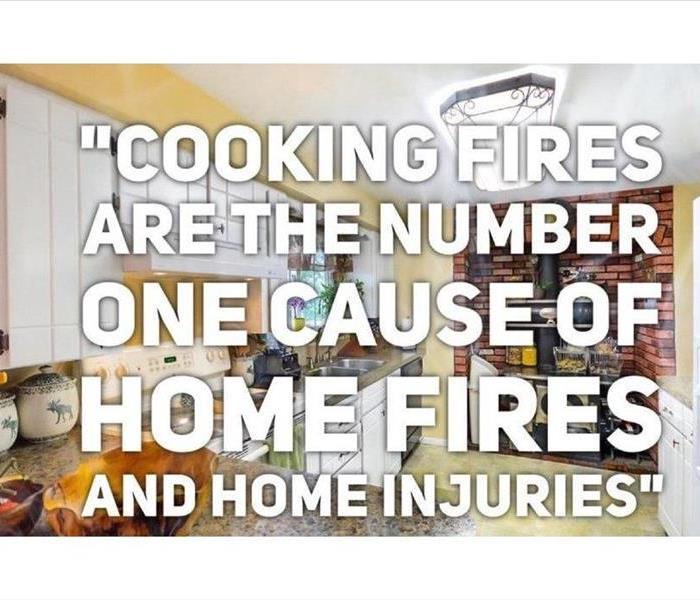 Kitchen Fire
Kitchen Fire
Most home fires are preventable, but sometimes common sense isn't so common. According to the National Fire Protection Association, it's not too early to protect your loved ones and your home from fire damage, by simply following sensible suggestions.
- Have your furnace checked.
- Have your chimneys and vents checked.
- Test smoke alarms. (You should have smoke alarms in each bedroom, kitchen and hallways, make sure to check the batteries periodically)
- Cover the fireplace with a screen.
- Beware of lit candles.( Never live at children’s reach)
- Beware of space heaters.
- Fire extinguishers can be life-savers. Store one under the kitchen sink, and in the hall closet near the bedrooms and the garage. Make sure you use the correct setting -- A for paper, wood and trash; B for grease and flammable liquids; C for small electrical fires.
-Know how to put out kitchen fires quickly. Water doesn't help a grease fire, which can get out of control. Keep salt and baking soda on hand to sprinkle liberally on pan fires. Keep lids handy to put on top of pots and pans that get too hot and have your extinguisher ready to spray on B
- Practice an escape route. Practice with your family and if it is a business make fire drills and assignee to make sure no one is left behind.
SERVPRO of Northwest Ontario is Ready to help you (909) 984-3544
Does Soot Go Away?
7/8/2021 (Permalink)
Calling a professional company such as SERVPRO of Northwest Ontario is the best decision you can make. Rather than figure out what the correct order of steps is to restore your home to its pre-fire condition, let our expert team compile an action plan that addresses each specific area of your home. Starting from eliminating water and extinguishing agents to repairing drywall, our team can lead the process with state-of-the-art techniques and equipment. Restoration is not about working hard on your home, but about taking smart steps to make the process seamless and practical.
How does SERVPRO of Northwest Ontario eliminate the odor in my home?
Areas in your home not touched by the fire may smell of smoke for no apparent reason. Our SERVPRO of Northwest Ontario technicians apply their knowledge of combustion theory and follow the smoke path through your ventilation system. Understanding both the path and the nature of each charred material allows us to pick the optimal cleaning solution for your home. Mitigating your loss by protecting your belongings from some cleaners' abrasive consequences is essential to our team.
Dry sponge - ideal for soot removal, it allows us to loosen dirt and debris for easier cleanup.
Thermal fogging- permeates your home with deodorizing solutions, allowing the spray to settle on all surfaces
Cal SERVPRO of Northwest Ontario (909) 984-3544 and let us leave your home, "Like it never even happened."
Steps to Clean After a Fire Damage
7/1/2021 (Permalink)
When you work with a residential fire cleanup crew, some of your smoke-damaged belongings may get saved. Content cleaning is a delicate art that can take the following shapes.
1. Dry-Cleaning: Clothes, furniture and other porous items often have to be cleaned with a dry-cleaning method. This helps remove the smoke and soot that built up during the fire. If you try to wash your clothes on a normal cycle, you may end up causing more damage. The soot has to be removed from the textiles before you can return to a typical cleaning method.
2. Wet cleaning is an effective cleaning method for removing moderate to heavy residues. For items that can’t withstand wet cleaning we can spray and wipe.
3. Foam cleaning can be used for upholstery fabrics that might shrink or bleed if wet cleaned.
4. Abrasive cleaning involves agitation of the surface being cleaned.
5. Odor Removal: Smoke isn't the only thing that can cling to your possessions. The odor after a fire can be a long-term reminder of what you went through. After cleaning methods have been put in place, you may want to do some sort of odor removal too. Professionals often use thermal fogging or ozone/hydroxyl treatments to rid your home of the funky smell.
After a fire, you want to get everything back to normal as soon as possible. This means you need to clean your belongings. If the cleaning process takes longer than expected, you can also use content storage to get your dirty, smelly items out of the house until they're clean.
We can help you call SERVPRO of Northwest Ontario (909)984-3544
Getting Ready for Summer
5/6/2021 (Permalink)
Summer is a time to enjoy the great outdoors, but it is also important to keep safety in mind. Consider the following tips, provided by the National Fire Protection Association, to keep you and your family safe all summer long.
- Always build a campfire downwind from the tent area. Clear vegetation and dig a pit before building your fire. Extinguish the fire before going to sleep or leaving the campsite.
- When using a charcoal grill, only use starter fluids designed for barbecue grills; do not add fluid after coals have been lit.
- When using a gas grill, ensure the hose connection is tight; check hoses for leaks. Applying soapy water to the hoses will easily and safely reveal any leaks.
- When camping, always use a flame-retardant tent and set up camp far away from the campfire.
- Store liquid fire starter (not gasoline) away from your tent and campfire and only use dry kindling to freshen a campfire.
Ideas for Candle Alternatives
5/4/2021 (Permalink)
 Fairy lights
Fairy lights
- Fairy Lights
Because they are usually battery-run, these are great alternative to candles especially if you're just using a candle for mood setting.
If you like candles for the warm scent they bring, wax warmers are a great alternative. Bringing in new aromas in a more controlled setting; they also use electricity and have no open flame.
- Essential Oil Diffuser
Essential oils create added scent to a room, with some good health benefits. There are many different diffusers to choose from, so you can easily find one that matches your home. Beware of oil diffusers if you have pets, as some cannot handle essential oils nor diffusers creating adverse effects to certain pets.
- Stick Diffuser
These are both easy and care-free; these simply add scent from the scented oil the sticks reside in.
- Battery-Powered Candles
The easiest change from open-flame candles to safer alternatives is to a battery-powered candle.
Smoke and Soot Smell Removal
7/27/2020 (Permalink)
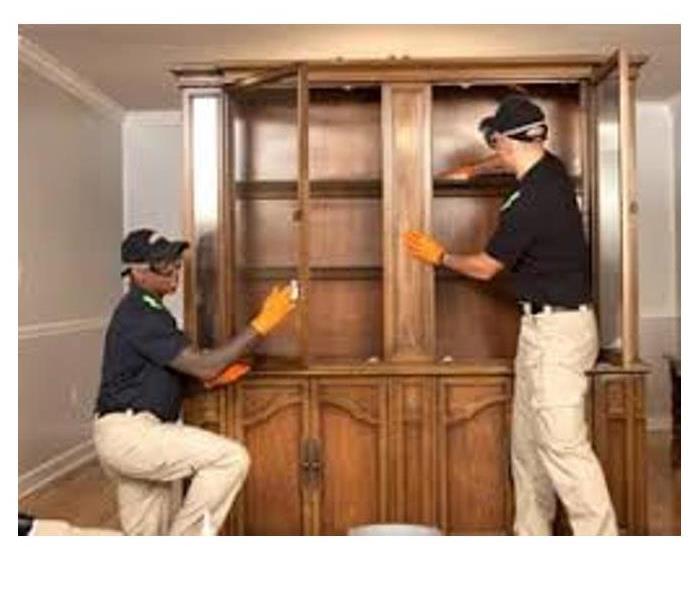 Cleaning soot after fire damage.
Cleaning soot after fire damage.
REMOVE THE SOURCE
The first and most important step in smoke odor removal is to remove the source of the odor(s). This involves removing burnt items, such as cabinets, furniture, drywall, and non-salvageable contents. The items can be either discarded or restored, depending on their condition.
AIR SCRUBBING.
SERVPRO of Northwest Onatrio will use a high-efficiency (HEPA) air scrubber which can remove 99.97% of particulates from the air. Removing these airborne particulates removes additional source materials for odors.
OZONE GENERATION. This is one of the most popular and familiar processes for removing airborne smoke odor molecules, including hard-to-neutralize protein smoke. Ozone is a powerful oxidizer that neutralizes odorous molecules by releasing additional oxygen into the air. Customers should not be present when an ozone generator is in operation Ozone works best in a controlled environment, such as an ozone chamber.
CLEANING
All salvageable items should be clean with approved products. Interior walls and hard surfaces should be cleaned. SERVPRO of Northwest Ontario will also clean inside cabinets, drawers, and closets, and wash household items, too.
Air ducts should be cleaned by professionals to preventing the HVAC system from re-contaminating areas that have been cleaned.
Types of Content Cleaning After a Fire
7/2/2020 (Permalink)
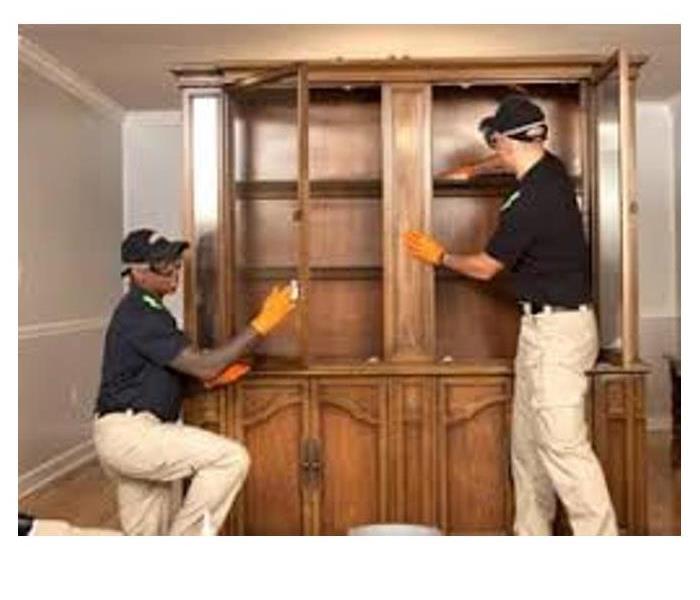 Content Cleaning
Content Cleaning
After a fire at your Ontraio, CA, residence you may choose to contact a fire damage restorationservice for help with cleanup and repairs. These professionals can also help with content storage while the home is being restored. Part of this process includes the repair of personal items, including those that may need dry-cleaning. Here are five types of items they may be able to help with.
1. Cloth Items
Cloth items such as clothing, rugs, curtains, and pillows can all be washed with special cleaners in order to get rid of smoke and soot damage. Fire damaged items you may want to replace depending on severity.
2. Furniture
Furniture, or items that can’t be easily moved such as cabinetry, may require a wipe down form of content cleaning. This usually involves using a rag or scrub brush to rinse the surface with a special cleaner.
3. Electronic Items
In many cases, a professional may be able to salvage your electronic items. If an electronic device cannot be saved the professional may still be able to transfer any data it contains to a new unit.
4. Paper Items
Paper items may be able to be restored as well. These items will first be freeze-dried before they are carefully cleaned
Steps to Take After a Home Fire
7/2/2020 (Permalink)
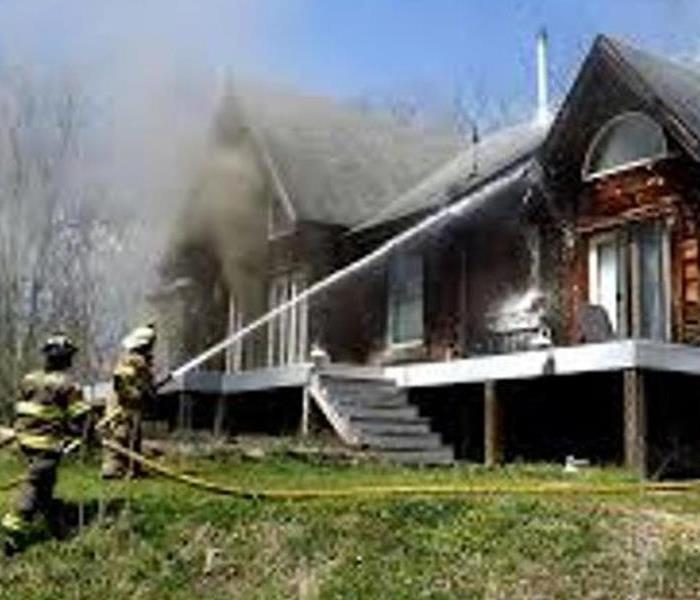 Home Fire
Home Fire
When a house fire hits your home, severe damage can take place at a rapid rate. With so much sudden and shocking devastation, homeowners often feel at a loss for where to begin in the process of fire restoration. After the fire is put out and the smoke has cleared, the following three steps should be taken to ensure quick and safe restoration takes place.
1. Call Your Insurance Provider
Once a house fire is contained and homeowners are free to go back to the property, the first thing that should happen is a call to the fire insurance company. Homeowners should immediately report the incident to their insurer to make sure proper action can take place in a timely manner. The insurance company will likely send an adjuster to the property to take photographs and document the damage that has occurred.
2. Steer Clear of Damage
A fire ravaged home can play host to many dangerous situations. Most homes suffer far more than just fire damage. After firefighters put out a fire, it is not uncommon for your home to have one or more of the following impairments:
? Ashes and debris
? Smokey air
? Water damage
? Unstable walls and floorboards
As tempting as it may be to scavenge your property for salvageable goods, it is best to wait for damaged property to be cleared. A home fire restoration service can clean and filter out dangerous fire remains before you set foot back in the home.
3. Hire a Service to Board-Up the Property
If your insurance company needs time to gather resources before starting the restoration process, you may wish to protect your vacant home. SERVPRO of Northwest Ontario fire damage restoration team can board up windows and tarp roof damage right away to prevent further harm from occurring. Boarding services keep your home safe from outside elements and theft until debris and smoke cleaning can be completed.
Addressing Concerns of Fire Damage in Your Home
7/2/2020 (Permalink)
 Selecting Damage Food Items
Selecting Damage Food Items
After experiencing fire damage to your home, there are many unanticipated concerns. Determining what foods are safe to keep or how to get that strong smoke odor out of your home are only a couple of many concerns however, both require extensive care.
SERVPRO of Northwest Ontario team can help go through and determine what foods have been contaminated and are no longer suitable for consumption. Foods that are exposed to air, even by the slightest cracks can become covered by soot and become odorous. After checking each and every food item our team can discern and dispose of all foods that may have gone bad during the fire.
In reassuring the odorous smell of smoke is removed from your home our team has many tools and resources in providing the greatest care in restoring your home. We sweep through your home top to bottom, cleaning every and all surface exposed to smoke or soot.
Our team here at SERVPRO of Northwest Ontario is thorough and meticulous in ensuring your fire damaged home is restored.
Give us a call SERVPRO Northwest Ontario (909) 984-3544
Fire Prevention Tips for Your Office
5/6/2020 (Permalink)
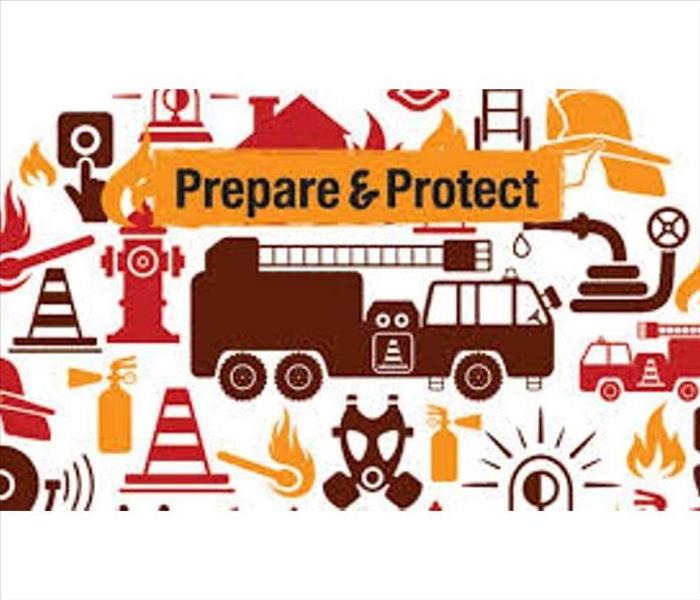 Fire Prevention
Fire Prevention
Studies have shown that most business fires occur while the premises are not populated, between the hours of 7 pm and 7 am, causing a large amount of damage. Commercial fires, caused by cooking equipment, are also potentially devastating, but surprisingly, the most damaging ones start in an office environment! Here are some fire prevention tips to help lower the odds your office is affected by fire.
Have A Plan. Designating someone as your “safety officer” is one step you can take that will really help. He or she can take the lead in establishing appropriate escape routes and meeting places, and setting up appropriate emergency procedures, as well. Your employees should be aware that the safety officer is in charge during any emergency and will be the one responsible for contacting emergency personnel, keeping track of employees, and assisting with providing information on equipment and chemicals kept in your office. An up-to-date emergency contact list should always be available at your place of business, and you should designate someone to be in charge of contacting family members or next-of-kin, in case of injury or a missing person.
Have Proper Equipment. There are specific items you will need to have on hand in advance of a fire, such as fire extinguishers and smoke alarms, and these are required through local building codes, so they should be present. Alarms and extinguishers need to be inspected monthly and replaced when necessary. You will also want to have a fully-stocked first aid kit and bottled water on hand, as well as flashlights, just in case.
Hold Regular Drills. Your safety officer should schedule regular drills and training to make sure everyone is well-versed in what to do in case of an emergency, such as an office fire. During these drills, new emergency response information can be shared to keep everyone up to date.
Fire Extinguishers
5/5/2020 (Permalink)
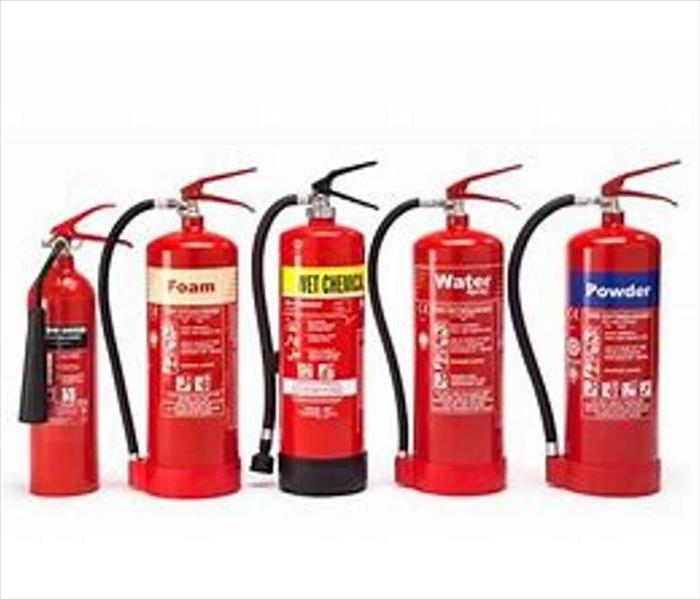 Types of Fire Extinguishers
Types of Fire Extinguishers
Did you know there are five different types of fire extinguishers and that each type is designed for different types of fire? Whether for your home or business, it’s important to have the correct type of fire extinguisher available.
Class A: This is the most common fire extinguisher. It can be used to put out fires in ordinary combustibles such as cloth, wood, rubber, paper and many plastics.
Class B: This type of fire extinguisher is used on fires involving flammable liquids, such as grease, gasoline or oil.
Class C: These fire extinguishers are designed for fires involving appliances, tools, or other equipment electrically energized or plugged in.
Class D: These fire extinguishers are for use on flammable metals, and are typically found only in factories that work with flammable metals.
Class K: This type of fire extinguisher is intended for use on fires that involve vegetable oils, animal oils or fats in cooking appliances. Class K fire extinguishers are generally found in commercial kitchens, but are becoming more popular for use in home kitchens.
Multi-Use: There are fire extinguishers available that are able to be used on several different types of fires. A combination of Classes A, B and C is a common multi-use fire extinguisher.
We at SERVPRO of Northwest Ontario are always ready to Help in your time of need.
Give us a call (909)984-3544
5 Home Fire Prevention Steps
7/26/2019 (Permalink)
Prevent a Home Fire
The best way to survive a home fire is by preventing one from occurring. Fortunately, fire preparation tasks are straightforward.
Install enough smoke alarms in your home.
Ideally, these alarms should be located inside each bedroom, on every level of the home, at least ten feet from cooking appliances, and in the halls outside of the bedrooms. Don't forget to test the alarms every month and replace the batteries on an annual basis. Make sure that family members know how to recognize the alarm and how to exit safely.
Perform home maintenance consistently and thoroughly.
Greasy buildup in burners, lint in the dryer hose, and neglected chimneys are all cause of fire damage. Many household chores and repairs, such as repairing damaged sockets, have a significant impact on fire preparation and prevention.
Store flammable items safely.
Keep gas for the lawnmower, lighter fluid, and similar products stored in a cool location and out of reach. Additionally, consider the many other potentially combustible items. Go through the cabinets and closets of your home, watching for things such as lighters, matches, chemicals, and other flammable items.
Prepare for emergency situations.
A ten-gallon can of baking soda near the stove top quickly puts out grease fires, safely and effectively. Fire extinguishers with BC or ABC rating are best. An A rating indicates that pressurized water is in the canister and that the extinguisher is not appropriate for cooking fires.
Teach Your Family Fire Safety
In addition to teaching children not to play with matches, fire safety education should include not throwing laundry over a lamp or leaving papers near heaters. The more your children are aware of how fires start, the better they'll be at avoiding them.
Fire preparation is one of the best ways to avoid fire damage and the cost of fire damage cleanup and restoration services.
Top reasons your insurance company may deny your fire claim
7/8/2019 (Permalink)
A home insurance policy typically covers numerous situations, including fire damage. However, there are two home fire circumstances that are usually not covered under most policies: arson and a fire inside a vacant home.
Investigating for Arson
Deliberately setting fire to a home is a criminal act, and a desire to collect insurance money is often the motive. For this reason, insurance companies require a fire investigation as part of the claim process. This helps the insurer establish the cause of the fire and note potentially suspicious details, such as multiple points of origin.
To help further reduce the risk of insurance fraud, your insurance company may also evaluate your personal finance and insurance claim history. Examples of potentially suspicious findings that may result in a denial of a home fire claim include the following:
- A recent increase in coverage or decrease in deductible
- Extensive debt or pending bankruptcy
- Prior insurance claims and loss history
- Recently purchased, high-value items on claim list
- The value of destroyed contents is inconsistent with household income
Because of this detailed investigation, any homeowner filing a claim in Ontario, California should be prepared for a potentially lengthy claim process.
A Vacant Home Fire
Like arson, a vacant home fire is also not typically covered under most insurance policies. A home is considered vacant if it is uninhabited for 30 or more consecutive days. If your insurance company can verify this circumstance, it may deny your claim, forcing you to fund cleanup and restoration costs out-of-pocket. To protect your financial interests, you should consider purchasing vacant home insurance or add an endorsement to your existing policy for any vacation homes or rental property you own.
Protecting Financial Interests
Your home insurance policy can be a strong financial safety net in the event of a home fire. However, because arson and insurance fraud are serious problems, insurance companies must thoroughly investigate fire claims to protect their financial interests. To further safeguard your financial security, you should update your policy to ensure vacation and rental properties are adequately protected.
If you have any questions you can call us at SERVPRO of Northwest Ontario (909)984-3544
Smoke and soot
7/8/2019 (Permalink)
Smoke and soot is very invasive and can penetrate various cavities within your home, causing hidden damage and odor. Our smoke damage expertise and experience allows us to inspect and accurately assess the extent of the damage to develop a comprehensive plan of action.
Smoke and soot facts:
- Hot smoke migrates to cooler areas and upper levels of a structure.
- Smoke flows around plumbing systems, seeping through the holes used by pipes to go from floor to floor.
- The type of smoke may greatly affect the restoration process.
Different Types of Smoke
There are two different types of smoke–wet and dry. As a result, there are different types of soot residue after a fire. Before restoration begins, SERVPRO of Northwest Ontario will test the soot to determine which type of smoke damage occurred. The cleaning procedures will then be based on the information identified during pretesting. Here is some additional information:
Wet Smoke – Plastic and Rubber
- Low heat, smoldering, pungent odor, sticky, smeary. Smoke webs are more difficult to clean.
Dry Smoke – Paper and Wood
- Fast burning, high temperatures, heat rises therefore smoke rises.
Protein Fire Residue – Produced by evaporation of material rather than from a fire
- Virtually invisible, discolors paints and varnishes, extreme pungent odor.
Our Fire Damage Restoration Services
Since each smoke and fire damage situation is a little different, each one requires a unique solution tailored for the specific conditions. We have the equipment, expertise, and experience to restore your fire and smoke damage. We will also treat your family with empathy and respect and your property with care.
Have Questions about Fire, Smoke, or Soot Damage? Call Us Today – 909-984-3544
Northwest Ontario Property Owners Can Always Ask SERVPRO for Help with Fire and Smoke Damage Cleanup and Restoration Services
6/28/2019 (Permalink)
DIY Smoke Damage Wall and Surface Cleanup in Northwest Ontario Homes
It is crucial to clean any area of your home that has fire damage as soon as possible. Both soot and smoke are acidic and often prove difficult to clean. Airborne soot particles are harmful to breathe and should be professionally cleaned to ensure a healthy living environment. For minor smoke damage, these tips should make it easy to clean up.
The items needed to clean fire damage in your Ontario home are probably already there with one exception, a dry-cleaning sponge. This sponge cleans surfaces without getting them wet and wipes away particulate matter. Other items you need are as follows:
Rubbing alcohol
White Vinegar
Degreasing cleaner
Bucket with hot water
Cleaning Cloths
Dry-cleaning sponge
Kitchen sponges
Respirator
Gloves
Eye protection
Disposable shoe covers
Before you begin cleaning walls damaged by fire, there are a few things you need to do. First, turn off your HVAC system, so soot does not spread and open up the windows and doors to ventilate the room, but only if there is no risk of circulating ashes or soot to clean areas of the home. Always consider calling in SERVPRO for fire damage restoration services.
Ensure that you wear clothing that covers your arms and legs. You need to wear a respirator, eye protection, and gloves as soot is unhealthy to breathe and can irritate the skin. If you leave the area you are cleaning to go to another area of the home, change your shoe covers to avoid tracking soot around the property.
If there is debris that requires removal or a lot of surfaces to clean, it is a smart move to bring in professional assistance to clean up your home. Improper cleaning of residues from a fire can stain walls and cause more damage to other surfaces. SERVPRO uses pre-testing to minimize potential added staining and marring to porous surfaces.
When you begin cleaning, use the dry-cleaning sponge first to wipe away as much soot and smoke residue as you can from surfaces. Avoid wetting soot as it has the potential to smear and spread, staining affected surfaces further.
One of the best dry-cleaning sponge techniques to use is to turn the sponge as you use it for a few strokes; this ensures you continue picking up soot instead of spreading it. Once all sides of the dry-cleaning sponge show soot, use a utility knife to slice away the sides to clean away the used portions and have virtually a clean sponge ready to work again. Use gentle wiping motions and never scrub walls or surfaces.
After you finish wiping surfaces with the dry-cleaning sponge, you can move on to regular sponges and liquid cleaners. There are specific commercial formulas for cleaning soot; however, vinegar, paint thinner, and degreasing solutions work in their place. It is vital to clean every surface in the room, even if it appears clean and untouched by smoke.
Rinse your cleaning cloth in a bucket of hot water as you wipe up residue from the fire and change the water out in the bucket when it is dark or smells like smoke. Then upon completion, wipe surfaces again with a clean cloth and clean water to remove any residue from cleaning products. Chances are great you may have to prime or recoat some walls or a ceiling with fresh paint.
SERVPRO of Northwest Ontario knows fire damage can feel overwhelming to deal with. Our qualified team is available 24/7 by calling (909) 984-3544 to mitigate fire loss in your home. We try to make it "Like it never even happened."
What To Do If You Suspect Natural Gas
5/21/2019 (Permalink)
4 Signs Of Gas Leak
They're sometimes hard to recognize, but it doesn't take much of a leak to cause a gas fire. These home disasters are all too common. Fortunately, you can avoid a fire or worse by recognizing signs of a leak:
- A hissing or whistling sound near the line
- The smell of rotten eggs or sulfur
- Bubbles in the water
- Dead houseplants
- Visible dust near the gas line
- Damage to the gas pipe
Family members or pets may show signs of a natural gas leak, as well. These may include nosebleeds, reduced appetites, nausea, mood changes, irritation to the eyes and throats, disorientation, and breathing difficulties.
Keep Your Family and Home Safe
Avoid a gas fire or explosion in your Ontario California home by following these top tips:
1. Check Gas Stoves
If you have a gas stove, the dials may have been turned on or left on accidentally. If you're confident it's safe to remain in your home, move to the stove and turn off any flames.
2. Do Not Flip Switches
Simply flipping the light switch to on or off could make a spark that causes a gas explosion. Instead, use a flashlight for any other actions you take in the house. Don't use the phone inside the house, either. In fact, don't use lighters, candles, or anything else that could ignite.
3. Ventilate the Home
Open all the windows and doors, so fresh air can come in and gas will move out of the house. Don't worry about taking any steps further than this. Instead, wait to contact emergency or fire remediation professionals when you and your family are safely outside.
4. Go Outside
Get everyone outside and go across the street. From this safe distance, call 911 or the appropriate authorities.
Learn as much as you can about what may cause a gas fire and how to avoid them to keep your family safe. Teach your family about natural gas and how to stay safe if they suspect a gas leak.
Fire prevention tip: how to prevent house fires
5/13/2019 (Permalink)
Your home is a special place for you and your family. With so many cherished moments associated with this one of a kind place, it is hard to imagine losing it. Unfortunately, many families are forced to go through the heartbreaking process of saying goodbye to their homes as a result of fires. What is even harder to accept is that most house fires could have been prevented with a few fire safety facts and fire prevention tips in place. So just what items in your home pose a threat to your safety and the safety of your family? Use the following fire safety information and fire prevention tips for how to prevent house fires, and continue making memories in your home.
Fire Prevention Tip #1: Test Smoke Alarms
One of the easiest fire prevention tips is to regularly check smoke alarms to ensure they are working properly. Smoke alarms are essential for how to prevent house fires, serving as the first line of defense when a house fire is imminent or already underway by emitting a piercing alarm to notify those in the house the moment smoke is detected. A non-functioning smoke alarm can, therefore, mean serious disaster. Each smoke alarm comes with important fire safety information and features a small button to test whether it is working or needs new batteries. If the beep is weak when testing the alarm, change the batteries right away.
Fire Prevention Tip #2: Clean Ovens and Stoves
Cleaning ovens and stoves are among the most important fire prevention tips. While cleaning your oven and stove is likely a least favorite chore, doing so on a regular basis can help prevent house fires. Fires from ovens and stoves can result when food particles fall onto burners and get too hot. In addition to removing particles of food in your oven and stove, make sure to keep the area around your oven and stove clear as well. Curtains that hang too close, cookbooks left in the vicinity of these appliances, or ill-placed dish towels can all put you at risk for house fires as well. Create a routine for before and after you cook that ensures ovens and stoves are free of hazards.
Fire Prevention Tip #3: Stay in the Kitchen
With a busy schedule, it can be hard to focus on just one thing at a time. During the evenings, many individuals are pulled in multiple directions, preparing dinner, helping the kids with homework, and getting the house in order for the next day. However, even short distractions that happen while cooking can have serious consequences. One of the well-known fire prevention tips is to never leave food unattended when cooking in the kitchen for any reason, as it only takes mere seconds for a fire to break out. If you must leave the kitchen, make sure to turn off any burners in use, or call a family member to watch over the food until your return.
Fire Prevention Tip #4: Check your Cords
With an increasing dependence on electronics for daily tasks now more than ever, you likely always have something plugged in to charge, whether a cell phone, tablet, or smartwatch. Another method for how to prevent house fires is discarding frayed wires and cords used to transmit power into electronics. Among your list of fire prevention tips, add regularly checking the condition of cords, looking for damage such as exposed wires or frays. If you notice damage, replace the cord immediately. Keep in mind that pets often like to chew on rubbery items, so keep cords out of reach to avoid damage.
Fire Prevention Tip #5: Take Care with Fireplaces
Though one of the more obvious fire safety facts, pay special attention when using fireplaces. Fireplaces pose a special risk for house fires as sparks can easily escape and fly out onto flammable surfaces. When having a fire, make sure there is a door between the fire and the floor to prevent the escape of sparks. When you have distinguished the fire, make sure that all ashes are completely cool before throwing them away. Purchase a metal container to dispose of ashes to reduce the risk of any still-warm ashes from causing a fire. Lastly, never leave a fire unattended under any circumstances.
Fire Prevention Tip #6: Check Your Dryer
Another very common source of house fires is clothes dryers. Fires result from dryer when vents are not properly installed or are not cleaned out regularly. Heat produced during the drying process can cause lint and other debris to get too hot, and lead to a fire. To prevent fires, make sure that dryer vents are properly installed using the instructions that came with the appliance. To be safe, you might consider enlisting a professional to assist with the installation process. Additionally, clean out the lint filter after every load of laundry. This often overlooked step takes just seconds but can save you and your family from experiencing a fire.
Fire Prevention Tip #7: Don’t leave Candles Unattended
Candles work wonders for enhancing the ambiance of a home, promoting much needed calm and relaxation through soothing scent and light. However, the exposed flame makes candles a hazard and potential risk for house fires. Another of the key fire prevention tips when lighting candles is to make sure they are placed far away from any fabric, such as curtains or blankets, and other flammable objects. If you’re leaving the house or starting to feel a bit drowsy, extinguish the flames immediately. Further, if you have little ones or furry friends around, consider waiting until they are out of the room. Pets and kids can easily tip over candles on accident.
Fire Prevention Tip #8: Maintain Heating Sources
Most of us rely on heating systems to keep us warm during the chilly months of winter. Because of this reliance, it is important to make sure that all heating sources are well-maintained and functioning properly. Heating sources that are broken and in need of repairs pose a great risk for fire. Filters should be cleaned regularly to avoid a buildup of dust and debris that can catch on fire. Additionally, you should have all heating sources inspected by a professional on an annual basis to catch malfunctioning components early.
Fire Prevention Tip #9: Avoid Old Space Heaters
If you not only rely on your home’s heating system to keep you warm but also rely on space heaters, take special care. One of the not so well known fire prevention tips, Many old space heaters pose a great risk for house fires, as they often do not have the same safety features now found in newer models (such as turning off automatically when tipped over). When using space heaters, other best practices including keeping heaters away from curtains, blankets, and furniture that can easily catch fire, place them in spots with little foot traffic, set space heaters on solid, firm surfaces, and do not set space heaters on any other surface besides the floor.
Fire Prevention Tip #10: Safely Store Flammable Products
Many of the products we use every day are flammable and therefore put us at risk for house fires. There are obvious products such as gasoline, which should always be stored in UL approved containers in a location outside of the house. Other flammable products include shaving cream and hairspray, which should be stored in cool places away from sources of heat.
Fire Prevention Tip #11: Don’t Smoke in the House
Smokers should pay special attention to their habits to prevent house fires. While you may enjoy the convenience and comfort that comes with smoking in your home, it is best to take smoke breaks outside of the house. A single unattended cigarette or a cigarette dropped after falling asleep in bed or while lounging on the couch, can result in a fire. When cleaning out your ashtray, be sure that all ashes are completely cool. Then, dampen ashes in the sink before placing in a trash can and out of the house.
Fire Prevention Tip #12: Grill Safely
There is nothing more exciting than a backyard barbecue with friends and families in the summer. There are a few precautions to take, however, for how to prevent house fires when grilling. If you’re grilling on the deck, be sure to place non-flammable pads beneath your grill to prevent the start of fire in the event of dropped food or coals. Also, be sure the grill is attended to at all times. Call a friend over to watch the grill if you must step away, even if only for a minute. If there is no one around to watch the grill, turn off the propane.
Fire Prevention Tip #13: Purchase a Fire Extinguisher
One of the best investments for how to prevent house fires is to purchase a fire extinguisher. Having a fire extinguisher handy can make the difference between a frighteningly close call, and a serious disaster resulting in the total loss of your home. Fire extinguishers can be purchased at most home improvement stores, and are incredibly affordable. Store your fire extinguishers in spots that pose a special risk for fires, such as in the kitchen or near fireplaces. Make sure that all family members in the house understand how to operate the fire extinguisher, and are comfortable taking the steps necessary in the event of a fire emergency.
Fire prevention tip: how to prevent house fires
4/16/2019 (Permalink)
Your home is a special place for you and your family. With so many cherished moments associated with this one of a kind place, it is hard to imagine losing it. Unfortunately, many families are forced to go through the heartbreaking process of saying goodbye to their homes as a result of fires. What is even harder to accept is that most house fires could have been prevented with a few fire safety facts and fire prevention tips in place. So just what items in your home pose a threat to your safety and the safety of your family? Use the following fire safety information and fire prevention tips for how to prevent house fires, and continue making memories in your home.
Fire Prevention Tip #1: Test Smoke Alarms
One of the easiest fire prevention tips is to regularly check smoke alarms to ensure they are working properly. Smoke alarms are essential for how to prevent house fires, serving as the first line of defense when a house fire is imminent or already underway by emitting a piercing alarm to notify those in the house the moment smoke is detected. A non-functioning smoke alarm can, therefore, mean serious disaster. Each smoke alarm comes with important fire safety information and features a small button to test whether it is working or needs new batteries. If the beep is weak when testing the alarm, change the batteries right away.
Fire Prevention Tip #2: Clean Ovens and Stoves
Cleaning ovens and stoves are among the most important fire prevention tips. While cleaning your oven and stove is likely a least favorite chore, doing so on a regular basis can help prevent house fires. Fires from ovens and stoves can result when food particles fall onto burners and get too hot. In addition to removing particles of food in your oven and stove, make sure to keep the area around your oven and stove clear as well. Curtains that hang too close, cookbooks left in the vicinity of these appliances, or ill-placed dish towels can all put you at risk for house fires as well. Create a routine for before and after you cook that ensures ovens and stoves are free of hazards.
Fire Prevention Tip #3: Stay in the Kitchen
With a busy schedule, it can be hard to focus on just one thing at a time. During the evenings, many individuals are pulled in multiple directions, preparing dinner, helping the kids with homework, and getting the house in order for the next day. However, even short distractions that happen while cooking can have serious consequences. One of the well-known fire prevention tips is to never leave food unattended when cooking in the kitchen for any reason, as it only takes mere seconds for a fire to break out. If you must leave the kitchen, make sure to turn off any burners in use, or call a family member to watch over the food until your return.
Fire Prevention Tip #4: Check your Cords
With an increasing dependence on electronics for daily tasks now more than ever, you likely always have something plugged in to charge, whether a cell phone, tablet, or smartwatch. Another method for how to prevent house fires is discarding frayed wires and cords used to transmit power into electronics. Among your list of fire prevention tips, add regularly checking the condition of cords, looking for damage such as exposed wires or frays. If you notice damage, replace the cord immediately. Keep in mind that pets often like to chew on rubbery items, so keep cords out of reach to avoid damage.
Fire Prevention Tip #5: Take Care with Fireplaces
Though one of the more obvious fire safety facts, pay special attention when using fireplaces. Fireplaces pose a special risk for house fires as sparks can easily escape and fly out onto flammable surfaces. When having a fire, make sure there is a door between the fire and the floor to prevent the escape of sparks. When you have distinguished the fire, make sure that all ashes are completely cool before throwing them away. Purchase a metal container to dispose of ashes to reduce the risk of any still-warm ashes from causing a fire. Lastly, never leave a fire unattended under any circumstances.
Fire Prevention Tip #6: Check Your Dryer
Another very common source of house fires is clothes dryers. Fires result from dryer when vents are not properly installed or are not cleaned out regularly. Heat produced during the drying process can cause lint and other debris to get too hot, and lead to a fire. To prevent fires, make sure that dryer vents are properly installed using the instructions that came with the appliance. To be safe, you might consider enlisting a professional to assist with the installation process. Additionally, clean out the lint filter after every load of laundry. This often overlooked step takes just seconds but can save you and your family from experiencing a fire.
Fire Prevention Tip #7: Don’t leave Candles Unattended
Candles work wonders for enhancing the ambiance of a home, promoting much needed calm and relaxation through soothing scent and light. However, the exposed flame makes candles a hazard and potential risk for house fires. Another of the key fire prevention tips when lighting candles is to make sure they are placed far away from any fabric, such as curtains or blankets, and other flammable objects. If you’re leaving the house or starting to feel a bit drowsy, extinguish the flames immediately. Further, if you have little ones or furry friends around, consider waiting until they are out of the room. Pets and kids can easily tip over candles on accident.
Fire Prevention Tip #8: Maintain Heating Sources
Most of us rely on heating systems to keep us warm during the chilly months of winter. Because of this reliance, it is important to make sure that all heating sources are well-maintained and functioning properly. Heating sources that are broken and in need of repairs pose a great risk for fire. Filters should be cleaned regularly to avoid a buildup of dust and debris that can catch on fire. Additionally, you should have all heating sources inspected by a professional on an annual basis to catch malfunctioning components early.
Fire Prevention Tip #9: Avoid Old Space Heaters
If you not only rely on your home’s heating system to keep you warm but also rely on space heaters, take special care. One of the not so well known fire prevention tips, Many old space heaters pose a great risk for house fires, as they often do not have the same safety features now found in newer models (such as turning off automatically when tipped over). When using space heaters, other best practices including keeping heaters away from curtains, blankets, and furniture that can easily catch fire, place them in spots with little foot traffic, set space heaters on solid, firm surfaces, and do not set space heaters on any other surface besides the floor.
Fire Prevention Tip #10: Safely Store Flammable Products
Many of the products we use every day are flammable and therefore put us at risk for house fires. There are obvious products such as gasoline, which should always be stored in UL approved containers in a location outside of the house. Other flammable products include shaving cream and hairspray, which should be stored in cool places away from sources of heat.
Fire Prevention Tip #11: Don’t Smoke in the House
Smokers should pay special attention to their habits to prevent house fires. While you may enjoy the convenience and comfort that comes with smoking in your home, it is best to take smoke breaks outside of the house. A single unattended cigarette or a cigarette dropped after falling asleep in bed or while lounging on the couch, can result in a fire. When cleaning out your ashtray, be sure that all ashes are completely cool. Then, dampen ashes in the sink before placing in a trash can and out of the house.
Fire Prevention Tip #12: Grill Safely
There is nothing more exciting than a backyard barbeque with friends and families in the summer. There are a few precautions to take, however, for how to prevent house fires when grilling. If you’re grilling on the deck, be sure to place non-flammable pads beneath your grill to prevent the start of fire in the event of dropped food or coals. Also, be sure the grill is attended to at all times. Call a friend over to watch the grill if you must step away, even if only for a minute. If there is no one around to watch the grill, turn off the propane.
Fire Prevention Tip #13: Purchase a Fire Extinguisher
One of the best investments for how to prevent house fires is to purchase a fire extinguisher. Having a fire extinguisher handy can make the difference between a frighteningly close call, and a serious disaster resulting in the total loss of your home. Fire extinguishers can be purchased at most home improvement stores, and are incredibly affordable. Store your fire extinguishers in spots that pose a special risk for fires, such as in the kitchen or near fireplaces. Make sure that all family members in the house understand how to operate the fire extinguisher, and are comfortable taking the steps necessary in the event of a fire emergency.






 24/7 Emergency Service
24/7 Emergency Service
